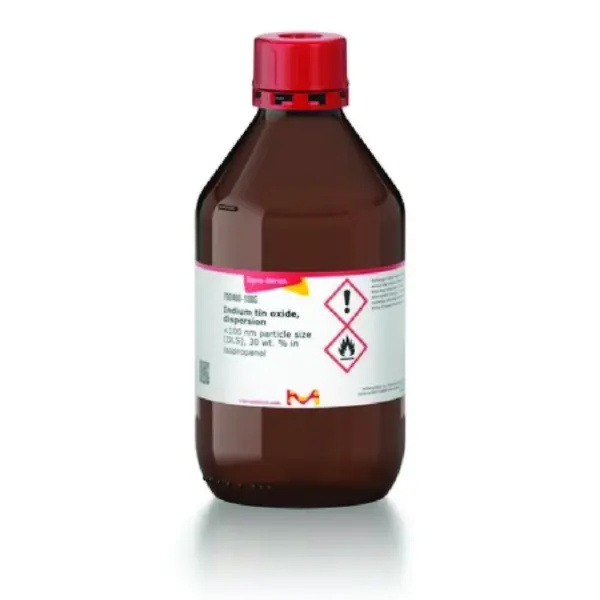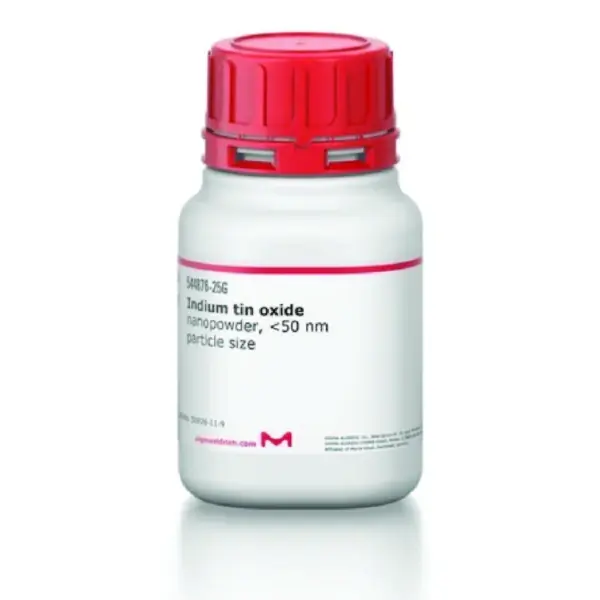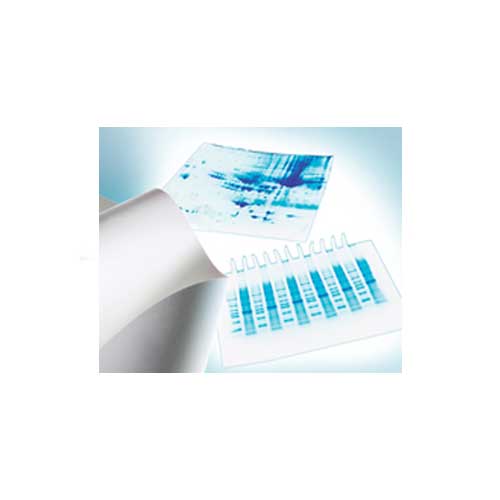
Immobilon-P PVDF Membrane, 0.45 µm
Price range: RM1,277.00 through RM2,920.00Brand:
Merck
Description
Immobilon-P Transfer Membrane:
- 45 µm pore size Recommended for most western blotting, especially proteins greater than 20 kDa
- Millipore’s Rapid Immunodetection Protocol reduces detection times by up to 2 hours by eliminating membrane blocking and several wash steps with no loss of sensitivity or specificity
Features & Benefits:
- Won’t crack, curl or fracture when cut
- Low background
- Superior staining capabilities
- Can be reprobed multiple times
Applications:
- Western Blotting, Immunoblotting, Dot Blotting, Protein Sequencing;
- Compatible with Chemiluminescent, Fluorescent, Radioactive, Chromogenic, and Chemifluorescent Detection
- Compatible with all commonly used fluorescent probes at all excitation and emission wavelengths
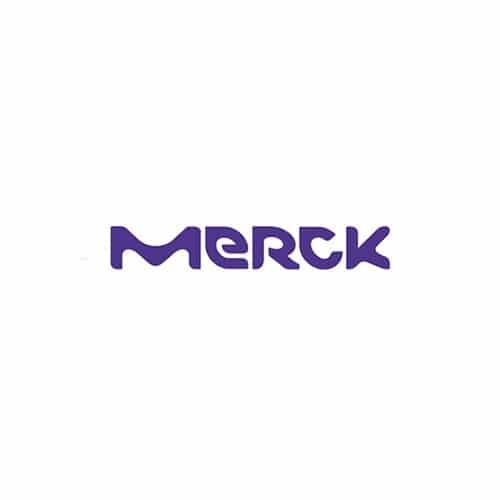
Immobilon® Block
Price range: RM851.00 through RM1,023.00Brand:
Merck
Description
Immobilon® Block Noise Cancelling Reagents are designed especially for Western blotting applications. This family of protein-free, ready-to-use buffers has been optimized to reduce background levels when using chemiluminescence, fluorescent, or phosphotyrosine detection. Bløk buffers are ideal for use with Immobilon®-P Western blotting membranes and the SNAP i.d.® system, and are also compatible with standard Western blotting techniques.
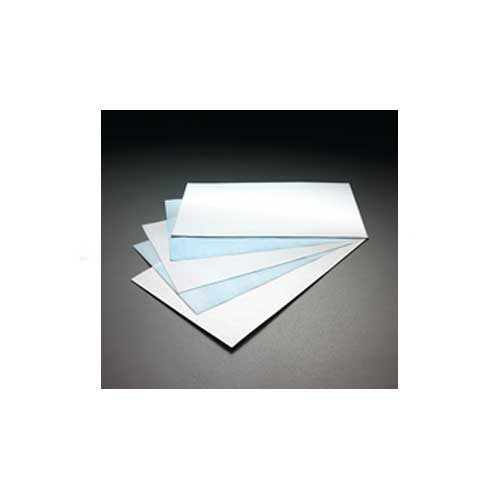
Immobilon®-FL Membrane, 0.45 µm
Price range: RM667.00 through RM3,423.00Brand:
Merck
Description
Immobilon-FL Membrane:
– The first transfer membrane optimized for fluorescence applications
– Extremely low background improves sensitivity of all fluorescence detection protocols
– Compatible with all commonly used fluorescent probes at all excitation and emission wavelengths
– Ideal for multiplexing and chemifluorescence applications
Features & Benefits:
– Won’t crack, curl or fracture when cut
– Low background
– Superior staining capabilities
– Can be reprobed multiple times
Applications:
– Western Blotting, Immunoblotting, Dot Blotting, Protein Sequencing;
– Compatible with Chemiluminescent, Fluorescent, Radioactive, Chromogenic, and Chemifluorescent Detection
– Compatible with all commonly used fluorescent probes at all excitation and emission wavelengths
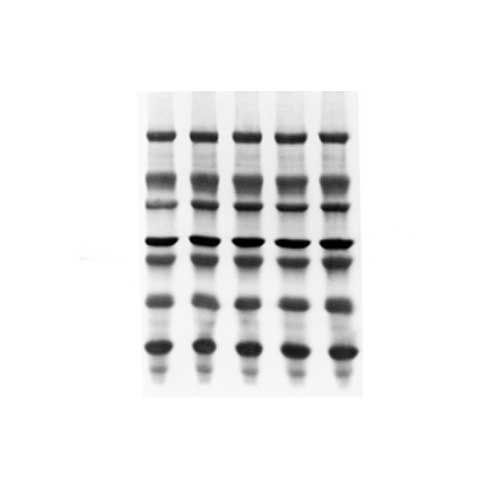
Immobilon®-PSQ PVDF Transfer Membrane, 0.2 µm
Price range: RM1,301.00 through RM3,123.00Brand:
Merck
Description
Immobilon-PSQ Membrane:
– 0.2 µm pore size and a large internal structure
– Higher protein adsorption and sequencing yields than other membranes
– Recommended for blotting proteins less than 20 kDa
– Prevents blow-through of low molecular weight proteins
Features & Benefits:
– Won’t crack, curl or fracture when cut
– Low background
– Superior staining capabilities
– Can be reprobed multiple times
Applications:
– Western Blotting, Immunoblotting, Dot Blotting, Protein Sequencing;
– Compatible with Chemiluminescent, Fluorescent, Radioactive, Chromogenic, and Chemifluorescent Detection
– Compatible with all commonly used fluorescent probes at all excitation and emission wavelengths
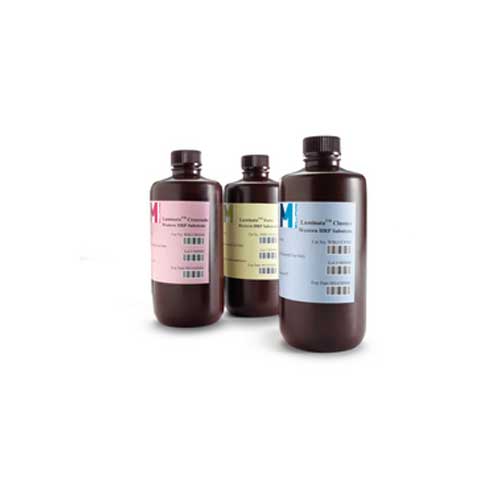
Immobilon™ Western HRP Substrate
Price range: RM598.00 through RM1,891.00Brand:
Merck
Description
Chemiluminescent HRP* substrates (also known as ECL reagents) are the most sensitive reagents used in the detection of Western blots. The Immobilon™ Western HRP Substrates are a family of three premixed HRP substrates, which offer several advantages over other detection reagents.
Key Application:
Western Blotting
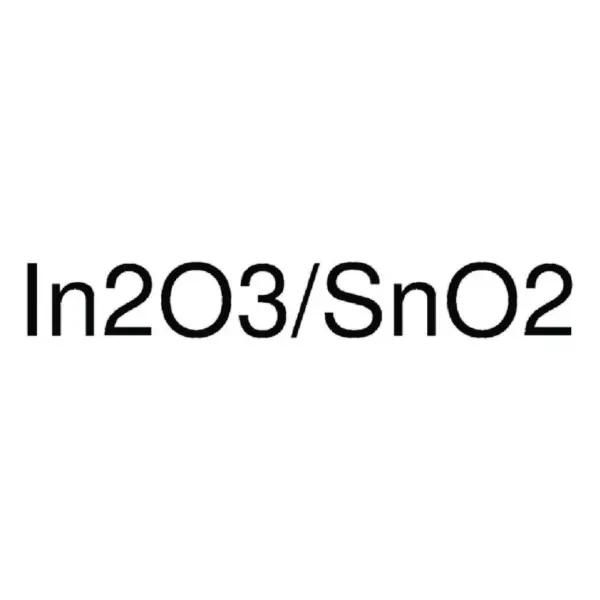
Indium tin oxide, ≥99.5% trace metals basis, 18 nm particle size (SEM), 20 wt. % in H2O – Sigma-Aldrich
RM1,636.00Brand:
Sigma-Aldrich
Synonyms
ITO
Cas No.
50926-11-9
General description
Indium Tin oxide nanoparticles have been investigated for use in:
- transparent electrodes
- the formation of conductive paper and organic contaminants
- the formation of transparent conductive oxide films and magnetic nanocomposites
- electrochromic materials and in biomedical applications
Indium tin oxide, dispersion, <100 nm particle size (DLS), 30 wt. % in isopropanol - Sigma-Aldrich
RM1,496.00Brand:
Sigma-Aldrich
Synonyms
ITO
Cas No.
50926-11-9
General description
Indium tin oxide (ITO) is a transparent conducting oxide with good optical transparency (T > 85% at 550 nm) and high electrical conductivity (ρ ∼ 10−4Ωcm). It can be used for various applications that require both optical transparency in the visible light region and high electrical conductivity.
Application
Indium tin oxide nanoparticles can be used to fabricate ITO thin films that are applied in the field of electroluminescent devices, electrochromic systems, liquid crystal display electrodes, solar cells ,and energy-efficient windows.
Indium tin oxide, nanopowder, <50 nm particle size - Sigma-Aldrich
RM1,376.00Brand:
Sigma-Aldrich
Synonyms
ITO
Cas No.
50926-11-9
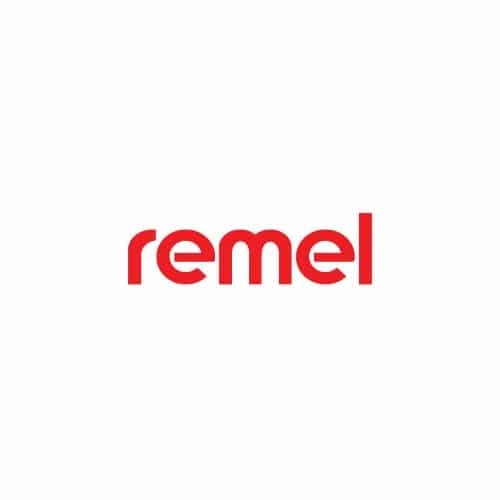
Indole Reagent,Kovac’s BTL/25ml
RM0.00Brand:
Thermo Scientific™ Remel™
Thermo Scientific™ Remel Kovacs Indole Reagent is for determination of the ability of microorganisms, primarily Enterobacteriaceae, to split indole from the tryptophan molecule.
- For use with Indole Broth

Ipm10 Imipenem
RM80.00Brand:
Thermo ScientificTM OxoidTM
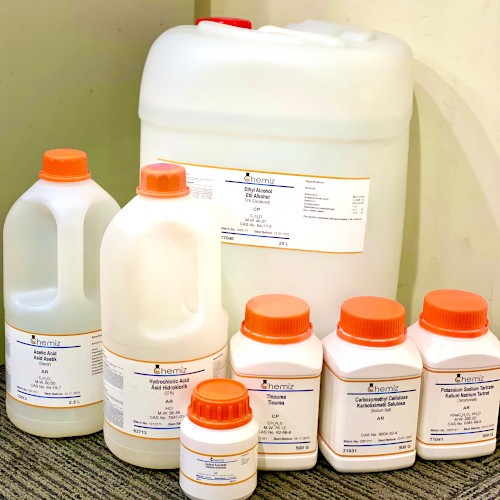
Iron (III) Chloride 6H2O, AR, 500g
RM36.00Brand:
Chemiz
Description
Synonyms: Ferric chloride hexahydrate
Formula: FeCl3 · 6H2O
Iron (III) chloride hexahydrate is used to detect the presence of phenols and phenolic derivatives. It is able to detect gamma-hydroxybutyric acids and salicylic acids in Trinder spot test.
Note:
AR: Analitycal Reagent Grade: Reagents for analytical purpose or research work that need high purity.
CP: Chemically Pure Grade: Reagents for regular practical in its original purity.

Iron (III) nitrate 9H2O, CP, 500g
RM28.00Brand:
Chemiz
Description
Synonyms: Ferric nitrate nonahydrate
Formula: Fe(NO₃)₃·9H₂O
Iron (III) nitrate nonahydrate is a water soluble crystalline iron source for uses compatible with nitrates and low pH. It is also used in cell culturing.
Note:
AR: Analitycal Reagent Grade: Reagents for analytical purpose or research work that need high purity.
CP: Chemically Pure Grade: Reagents for regular practical in its original purity.
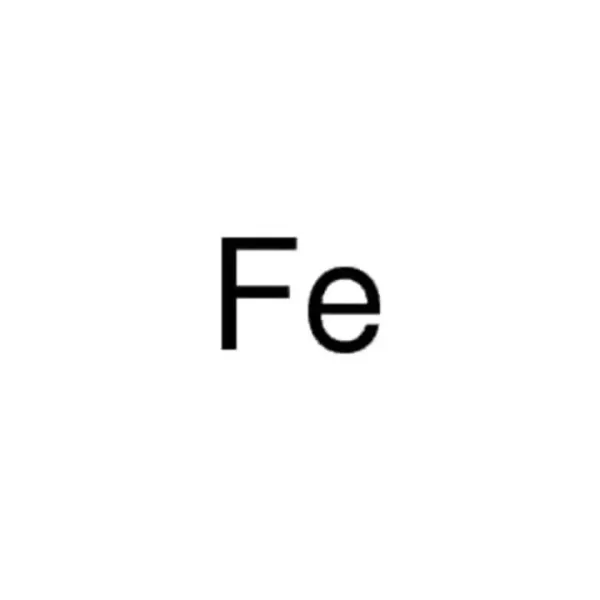
Iron puriss. p.a., carbonyl-Iron powder, low in magnesium and manganese compounds, ≥99.5% (RT)-Sigma-Aldrich
RM1,792.00Brand:
Sigma
Description
Cas Number :7439-89-6
Molecular mass :55.85 g/mol
Chemical formula : Fe
Synonyms : Fe
Iron (carbonyl) powder has been used:
In the preparation of copper on iron (Cu/Fe) bimetallic catalytic system to synthesize β-aminoenones and 3,5-disubstituted pyrazoles.[1]
As the main component of magnetorheological fluids.[2][3]
To produce Fe-B-C composites from boron carbide using plasma sintering.[4]
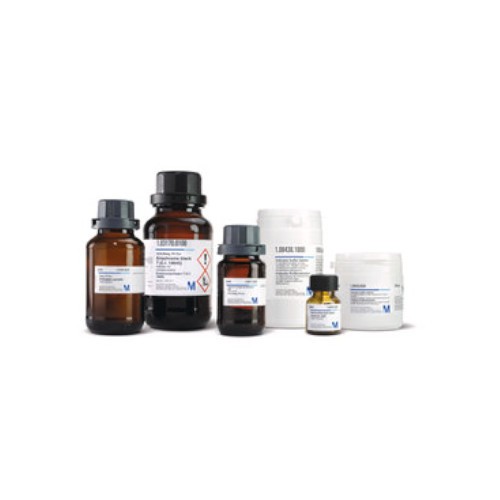
Iron Standard Solution, Traceable to SRM from NIST (Merck)
RM175.00Brand:
Merck
CAS no.: 10421-48-4, 7697-37-2
Traceability: Traceable to SRM from NIST Fe(NO₃)₃ in HNO₃ 0.5 mol/l 1000 mg/l Fe Certipur®
Synonym: –
Quality level: MQ300
Product specification and SDS for Iron Standard Solution.
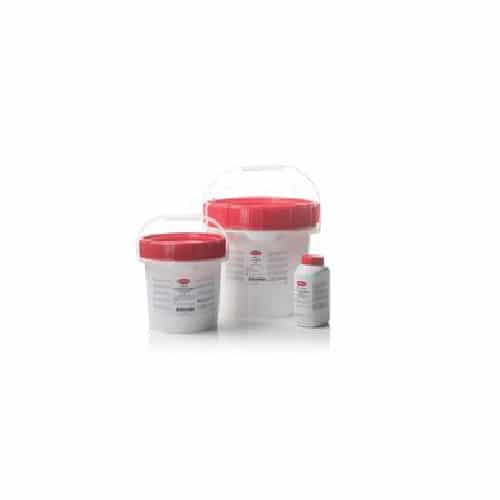
Iron Sulphite Agar 500g
RM771.00Brand:
Thermo ScientificTM OxoidTM
Detect thermophilic anaerobic organisms causing sulphide spoilage in food with Thermo Scientific™ Oxoid™ Iron Sulphite Agar (Dehydrated). The medium is a modification of Cameron Sulphite Agar developed by the National Canners Association of America1. Iron Sulphite Agar has a reduced concentration of sodium sulphite to allow improved detection of some strains of Clostridium sporogenes.
Iron Sulphite Agar, Oxoid Composition
| Typical Formula* |
gm/litre |
| Tryptone |
10.0 |
| Sodium sulphite |
0.5 |
| Iron (III) citrate |
0.5 |
| Agar |
12.0 |
| pH 7.1 ± 0.2 @ 25°C |
Iron Sulphite Agar, Oxoid Preparation:
Suspend 23.0g in 1 litre of distilled water and boil to dissolve completely. Sterilise by autoclaving for 15 minutes at 121°C. Mix well before pouring.
Storage conditions and Shelf life
Store the dehydrated medium at 10-30°C and use before the expiry date on the label.
Store the prepared medium below 25°C.
Precautions
The blackening reaction is only presumptive evidence of clostridial growth. Confirmation tests must be carried out to identify the organism growing in the medium.

Iso-Sensitest Agar 500g
RM1,036.00Brand:
Thermo ScientificTM OxoidTM
Thermo Scientific™ Oxoid Iso-Sensitest Agar is a semi-defined medium designed for antimicrobial susceptibility testing.
Iso-Sensitest Agar, Oxoid Composition
| Typical Formula* |
gm/litre |
| Hydrolysed casein |
11.0 |
| Peptones |
3.0 |
| Glucose |
2.0 |
| Sodium chloride |
3.0 |
| Soluble starch |
1.0 |
| Disodium hydrogen phosphate |
2.0 |
| Sodium acetate |
1.0 |
| Magnesium glycerophosphate |
0.2 |
| Calcium gluconate |
0.1 |
| Cobaltous sulphate |
0.001 |
| Cupric sulphate |
0.001 |
| Zinc sulphate |
0.001 |
| Ferrous sulphate |
0.001 |
| Manganous chloride |
0.002 |
| Menadione |
0.001 |
| Cyanocobalamin |
0.001 |
| L-Cysteine hydrochloride |
0.02 |
| L-Tryptophan |
0.02 |
| Pyridoxine |
0.003 |
| Pantothenate |
0.003 |
| Nicotinamide |
0.003 |
| Biotin |
0.0003 |
| Thiamine |
0.00004 |
| Adenine |
0.01 |
| Guanine |
0.01 |
| Xanthine |
0.01 |
| Uracil |
0.01 |
| Agar |
8.0 |
| pH 7.4 ± 0.2 @ 25°C |
Iso-Sensitest Agar, Oxoid Preparation:
Suspend 31.4g in 1 litre of distilled water and bring to the boil to dissolve the agar. Sterilise by autoclaving at 121°C for 15 minutes.
Storage conditions and Shelf life
Store the dehydrated medium at 10-30°C and use before the expiry date on the label.
Store the prepared medium at 2-8° C and use as freshly as possible.

Iso-Sensitest Broth 500g
RM1,256.00Brand:
Thermo ScientificTM OxoidTM
Perform effortless testing using Thermo Scientific™ Oxoid™ Iso-Sensitest Broth (Dehydrated), a semi-defined medium specifically designed for antimicrobial susceptibility testing (AST). Iso-Sensitest Broth is carefully constructed to give reproducible results. It allows the growth of the majority of microorganisms without the need of further supplementation.
Iso-Sensitest Broth, Oxoid Composition
| Typical Formula* |
gm/litre |
| Hydrolysed casein |
11.0 |
| Peptones |
3.0 |
| Glucose |
2.0 |
| Sodium chloride |
3.0 |
| Soluble starch |
1.0 |
| Disodium hydrogen phosphate |
2.0 |
| Sodium acetate |
1.0 |
| Magnesium glycerophosphate |
0.2 |
| Calcium gluconate |
0.1 |
| Cobaltous sulphate |
0.001 |
| Cupric sulphate |
0.001 |
| Zinc sulphate |
0.001 |
| Ferrous sulphate |
0.001 |
| Manganous chloride |
0.002 |
| Menadione |
0.001 |
| Cyanocobalamin |
0.001 |
| L-Cysteine hydrochloride |
0.02 |
| L-Tryptophan |
0.02 |
| Pyridoxine |
0.003 |
| Pantothenate |
0.003 |
| Nicotinamide |
0.003 |
| Biotin |
0.0003 |
| Thiamine |
0.00004 |
| Adenine |
0.01 |
| Guanine |
0.01 |
| Xanthine |
0.01 |
| Uracil |
0.01 |
| pH 7.4 ± 0.2 @ 25°C |
|
Iso-Sensitest Broth, Oxoid Preparation:
Add 23.4g to 1 litre of distilled water. Mix well and heat to dissolve. Distribute into tubes or bottles. Sterilise by autoclaving at 121°C for 15 minutes.
Storage conditions and Shelf life
Store the dehydrated medium at 10-30°C and use before the expiry date on the label.
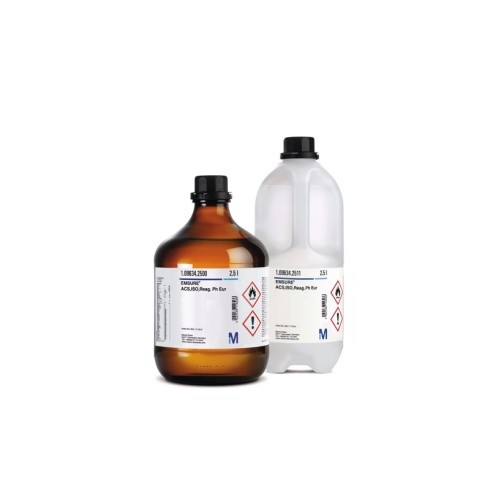
Isooctane for analysis EMSURE® ACS,Reag. Ph Eur (Merck)
Price range: RM129.00 through RM267.00Brand:
Merck
CAS no.: 540-84-1
Grade: For analysis EMSURE® ACS,Reag. Ph Eur
Chemical Formula: CH₃C(CH₃)₂CH₂CH(CH₃)CH₃
Synonym: 2,2,4-Trimethylpentane, Isobutyltrimethylmethane, iso-Octane
Quality level: MQ300
Product specification and SDS for Isooctane for analysis EMSURE®.
Isooctane for liquid chromatography LiChrosolv®
RM395.00Brand:
Merck
Description
CAS number: 540-84-1
Chemical Formula: CH₃C(CH₃)₂CH₂CH(CH₃)CH₃
Molar Mass: 114.23 g/mol
Synonyms: 2,2,4-Trimethylpentane, Isobutyltrimethylmethane, iso-Octane
With their high degree of UV transmittance, low particle count, low acidity and alkalinity and low evaporation residue level, LiChrosolv® solvents are ideal for reproducible separations. Since separations are normally carried out under gradient conditions in analytical HPLC, we offer solvents in “gradient grade” as well as “isocratic grade”. This enables to minimize the gradient effect of the solvent involved. Filtered by 0.2 µm filter

Isopropyl alcohol (2-propanol) AR, 2.5L
RM44.00Brand:
Chemiz
Description
Synonyms: 2-propanol
Formula: (CH3)2CHOH
Isopropyl alcohol is a colourless, flammable and has strong odour compound. It is commonly used as analytical solvent reagent.
Note:
AR: Analitycal Reagent Grade: Reagents for analytical purpose or research work that need high purity.
CP: Chemically Pure Grade: Reagents for regular practical in its original purity.
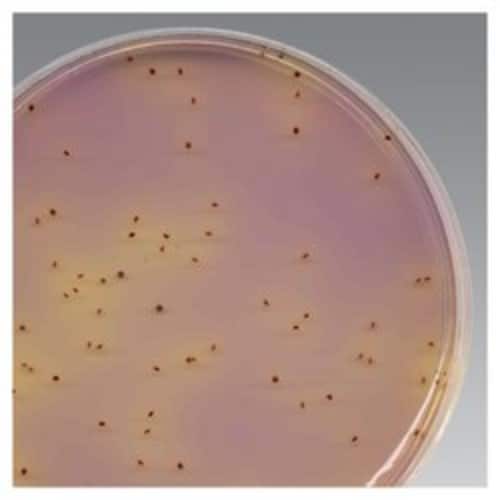
K-F Streptococcus Agar 500g
RM555.00Brand:
Thermo ScientificTM OxoidTM
- Oxoid K-F Streptococcus Agar is a selective medium for the isolation and enumeration of Group D Streptococci.
- Also available TTC Solution, Part No. SR0148A.
K-F Streptococcus Agar Base, Oxoid Composition
| Typical Formula* |
gm/litre |
| Proteose peptone |
10.0 |
| Yeast extract |
10.0 |
| Sodium chloride |
5.0 |
| Sodium glycerophosphate |
10.0 |
| Maltose |
20.0 |
| Lactose |
1.0 |
| Sodium azide |
0.4 |
| Bromo-cresol purple |
0.015 |
| Agar |
20.0 |
| pH 7.2 ± 0.2 @ 25°C |
K-F Streptococcus Agar, Oxoid Preparation:
Suspend 38.2g in 500ml of distilled water. Bring to the boil with frequent agitation. Boil for 5 minutes. Cool to 50°C and add aseptically 1 vial (5ml) of 1% 2,3,5-Triphenyltetrazolium chloride (SR0229K). Pour into sterile Petri dishes when using the membrane filtration method or hold at 45°C when using the pour-plate method.
Storage conditions and Shelf life
Store the dehydrated medium at 10-30°C and use before the expiry date on the label.
Store the prepared plates at 2-8°C.
Precautions
Observe the HAZARD precautions regarding sodium azide when disposing of the medium. The pH of the medium should not fall below 7.0 as it may become inhibitory towards enterococci. KF Streptococcus Agar is not specific for the presumptive identification of Group D streptococci. Further tests must be made to confirm the identity of the organisms isolated.

K30 Kanamycin
RM0.00Brand:
Thermo ScientificTM OxoidTM

K5 Kanamycin
RM0.00Brand:
Thermo ScientificTM OxoidTM

